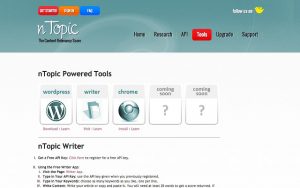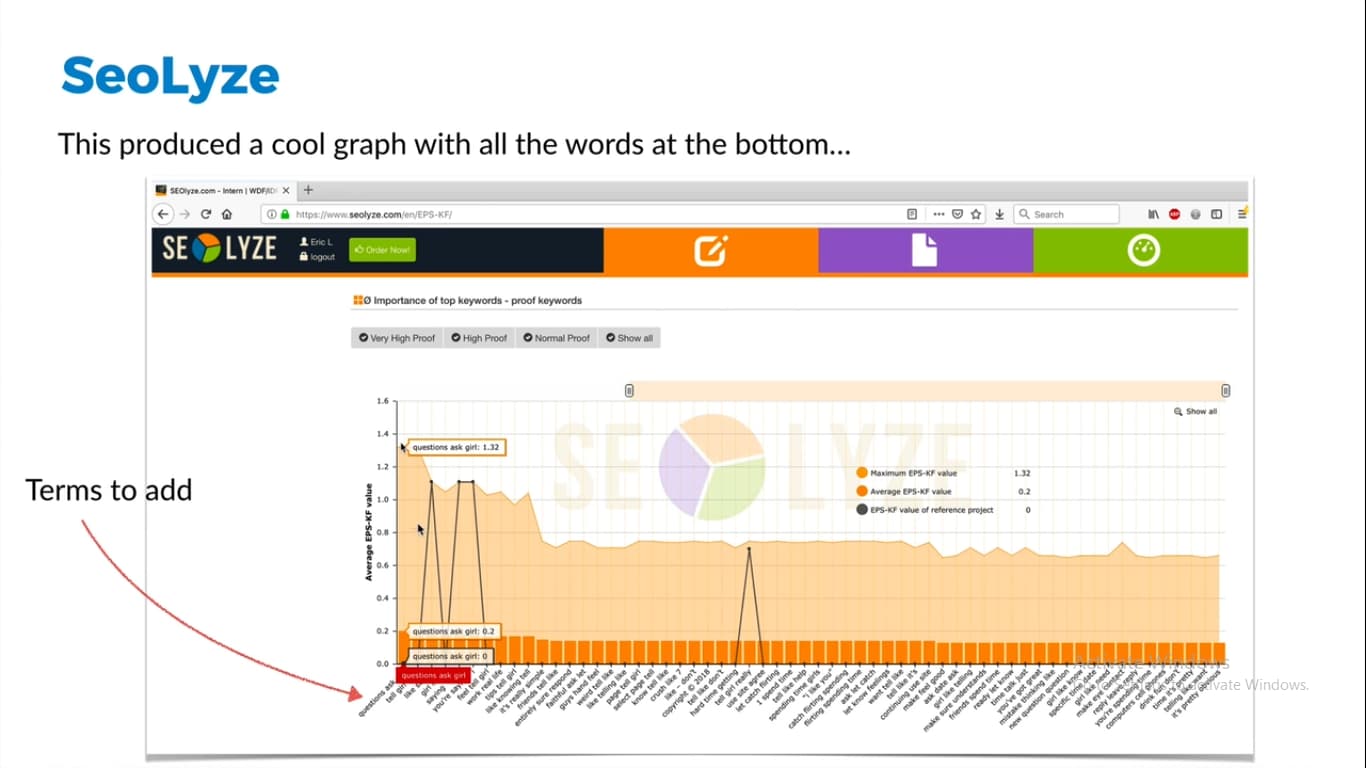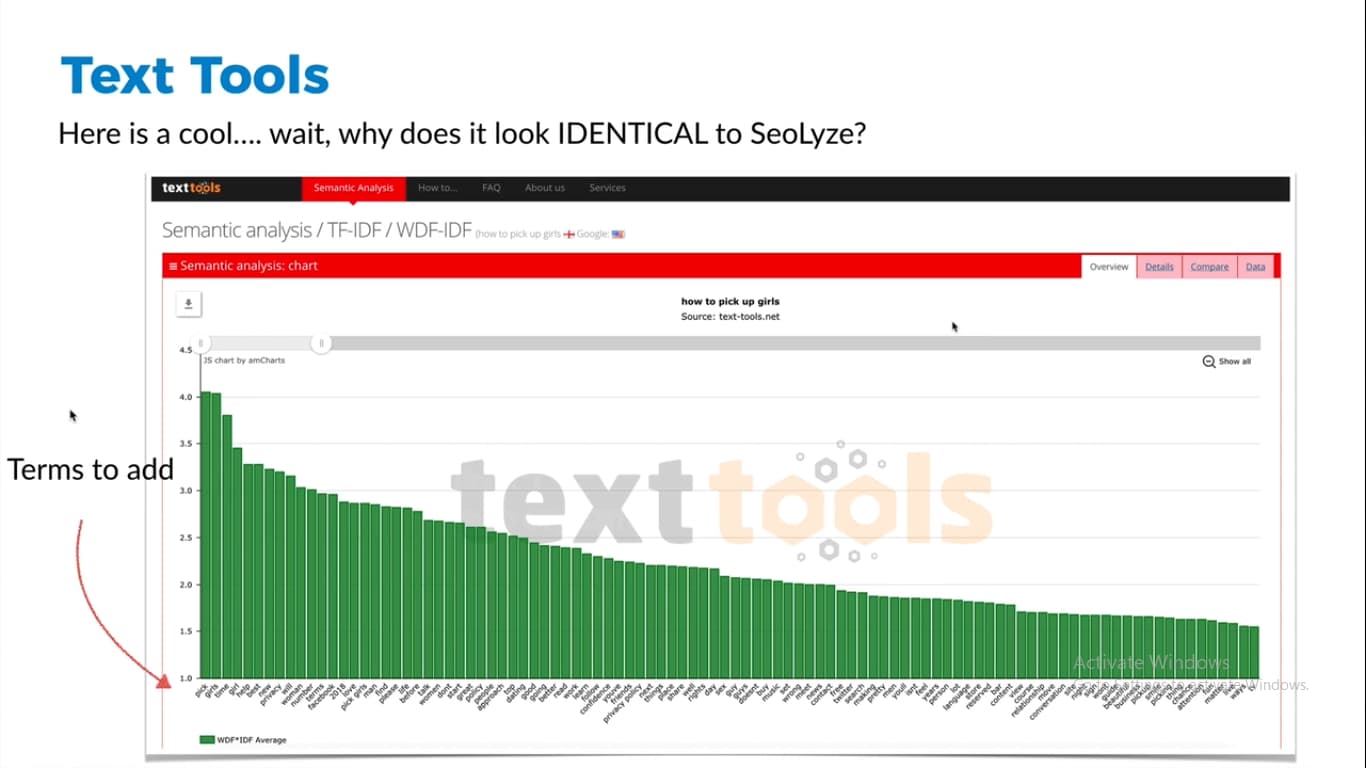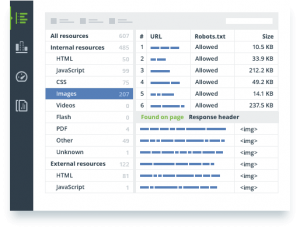5 Best Content Relevancy and Optimization Tools – Pros & Cons
- Home
- /
- Blog Posts
- /
- 5 Best Content Relevancy and Optimization Tools – Pros & Cons
So, this is part two, we previously talked about how to increase your rankings by increasing relevance. It’s time to know the tools that can help you increase relevance.
We’re going to compare 4 different tools:
- Ntopic.org
- Seolyze.com
- Text-tools.net
- Website auditor (link-assistant.com)
Important note:
We’re NOT affiliated with any of these tools. There’re no affiliate links, we paid for all of them and we’d like to share our experience with you for optimal results.
1. Ntopic.org
This is the original tool and quite possibly the most famous one amongst professionals. It works amazingly well. Plus, it’s really inexpensive ($15/month). It’s more like an early technology that still has a sizeable reach.
HOWEVER…
The creators eventually never fixed the PayPal integration when it broke down. So, that means you can’t sign up with them anymore, which is a shame.
So, old subscribers get their subscriptions renewed with no difficulty. The problem is with PayPal integration for new subscribers.
What’s good about Ntopic:
- Super simple to use
- Focuses on your content. So, it excludes headers/footers/sidebars)
- Among the best keyword suggestions with the least amount of bogus words.
What’s bad about Ntopic:
- Slow
- Sometimes it hangs
- No support
- Broken signup form (so, I can’t really recommend it)
- Very limited features
- Accuracy is questionable in certain cases.
What’s the best alternative for Ntopic that offers better features?
Similar Content is the best alternative for Ntopic! It’s a mind-blowing tool with many features:
- Keyword ranking
- Article analysis
- Keyword research
- Niche discovery
- Article rewrite
2. Seolyze.com

This tool was really awesome as soon as I signed up for it. It produces a nice graph that provides valuable insights to any query that you might have.
They took the Ntopic service to the next level. But, as I got to use it more and more, I had some bad experiences you’ll know in a second.
In the graph, we’ll see how much to use each word, and at the bottom, they have all the words that we should use.
On the left navigation bar, they have so many cool extra features and metrics that can definitely help with the website. But, let’s stay on the subject.
What’s good about SEOlyze.com?
- Nice graph
- Multiple features (adding stop words, trying to see multi-words, etc)
What’s bad about SEOlyze.com?
- Tons of junk suggestions (for example; it’s telling us to add some junk words like just, should know, tell, don’t, etc.).
- ANNOYINGLY hard to use (we have to constantly resize the graph, squint, tilt our heads sideways or use the complicated report).
- Expensive given the poor results.
3. Text-tools.net

As soon as I logged in there was the question of “why are you guys using the same graph as Seolyze?”
For some reason, the programmer thought that the graph looked cool (when it’s doesn’t), and so they both look identical.
What’s good about Text Tools?
- Slightly better suggestions than Seolyze.
- Reasonable price
- We can REGISTER.
What’s bad about Text Tools?
- It’s annoying to read and use the chart.
- What this tool suggested was quite debatable sometimes like “privacy”, “top”, “find”, etc.
- Limited features. It’s very similar to the features on Ntopic but they made it more complicated to use.
4. Website Auditor:
We can download the software for free and use the TF-IDF feature (term frequency-inverse document frequency) as much as we want.
It uses our computer’s resources to scan the other pages to come up wi th suggestions. But, sometimes it struggles.
th suggestions. But, sometimes it struggles.
What’s good about Web Auditor?
- It’s free for the TF-IDF.
- Relatively easy to use.
- You can run it locally, which is very useful for many users.
What’s bad about Web Auditor?
- Average suggestions (like “privacy policy”, “email address”, “rights reserved”) which AREN’T related keywords! If you include these, your content’s intent changes to nonsensical.
- We need to upgrade to the Pro version to save reports and unlock more features (it’s not actually a fault, but, we’re already getting much value from the free version).
What is Tf*IDF?!
Wikipedia goes on to define tf*idf as…
The TF-IDF value increases proportionally to the number of times a word appears in the document but is often offset by the frequency of the word in the corpus, which helps to adjust for the fact that some words appear more frequently in general.
Simply, it’s a part of latent semantic indexing (or LSI), which is a method for processing language (also often known as natural language processing, or NLP). Basically, it allows Google to rank the article based on relevance against a specific term or topic (the main keyword).
5. Similar Content:
SimilarContent is amazing for beginners, intermediate and professionals. It’s definitely NOT hard to use! Enjoy increasing rankings and getting organic traffic with fewer backlinks.
What’s good about Similar Content?
- The cheapest yet most efficient relevant tool so far.
- Very fast with results (only takes a few seconds).
- Real-time content scoring.
- LSI is exactly what Google suggests.
- Analyzes the top 100 results (not just the top 10 like other tools).
What’s bad about Similar Content?
- Needs few updates (but, it’s okay, the tool is still new)
When to Use These Tools?
If you do NOT have someone paying attention to related keywords when producing articles …
If you have poorly optimized articles, then you will definitely see massive changes in the ranking when you use the tools.
Which Content Relevance Tool Is The Best?
Well, SimilarContent has conquered all the cons of other tools and it even gives us a suggestion list of related keywords (1 word, 2 words, 3 words, 4 words, 5 words, and 6 words). We can also find which questions to include in the article to optimize it and get better ranking results.
In a nutshell, SimilarContent provides more objective accuracy. It also enables the power to explore various channels and factors based on what custom information a user requires. You can click on the various segments for real-time assessments.
It’s also easy to capture emerging trends with this tool. This enables you to achieve success in monitoring the practices you follow that don’t seem to work. You’ll also get tips to involve removing bad parts of a piece of content.
You can beat the competition and increase your exposure easily with SimilarContent.
WHY IS CONTENT RELEVANCE SO IMPORTANT?
Search mechanics and SEO, in general, are very subjective to how much attention you pay to the details. Your site’s content curation should be just right and high-quality to ensure that the information you provide across your site is indexable and likable by the search engine.
And content is so far the most important part of a website.
To rank higher and improve your optimization, you need to increase your content relevancy to the keywords you want to rank for.
Whether you’re a business, an online information hub, or a social portal — you need to put your users first. Websites can only win if they do that.
The data you provide or the product you offer should be high-quality but at the same time, your overall content (including the body copy, title, meta description, image tags, any official page, etc.) need to be relevant to the keywords you want to rank for.
Content relevance is key to a successful website. How well you manage your goals also depends on whether you can ensure your content to be relevant or not. That’s just how the algorithms work, and your platform needs to exploit that.
WRAPPING UP
The user will determine whether your website works for him/her or not. No amount of analytics can predict that for you.
When you engage in manual personalization of your content, it will take a very long while to achieve results. For example, you will need to audit each post, multiple times.
Sure, you can create the best process yourself but just to save time, I recommend you use what’s already there, free of cost and completely digital, to get the job done. To help the search engines understand your webpages, it’s best to take help of one of these tools.
You may also create a guide out of the information from one of these tools and automatically increase content relevancy in the future while writing.
Targeting improvement in content relevance, you’ll gather a lot of knowledge, enough to come up with a monthly planner based on which you can keep on working on your website.
Most popular platforms for information (like Moz for web design, Medium for readers, Quora for Q&A, etc.) learn their audience behavior over time and how they can make them trust the information they provide. It comes with proper usage of content relevance. That’s how they increase their followers.
Finally, make sure to share your experience and results with us. Plus, I’ve provided, as promised, the best recommendation for you.
.